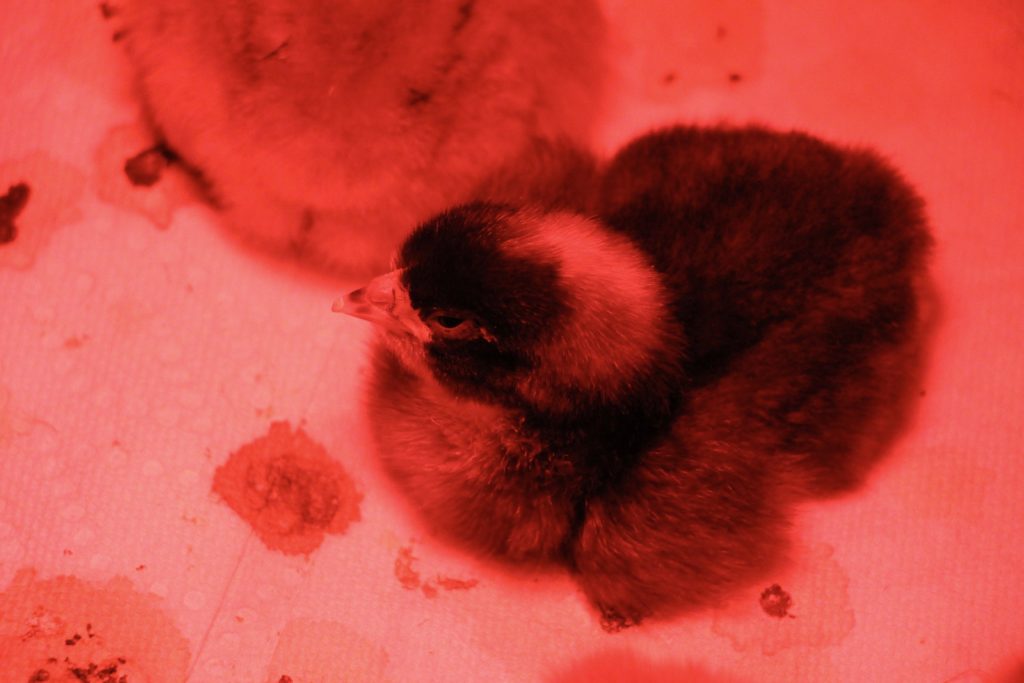
I admit it. I have pandemic pullets. In my defense, I got them simply because I had nothing else to do with everything cancelled, not because I was afraid of the apocalypse!
I love the temperament of barred rocks but love the colour of rhode island reds! So I got three of each. I named my chickens after herbs; Juniper, Parsley, Comfrey, Periwinkle, Clove and Mallow. From day one, Juniper was the largest and I assumed she was a couple hours older or so. (When they are chicks, this makes a difference!) Everyday, you could see their tiny personalities growing, especially when I took them out for the first time! Periwinkle, a small rhode island was alway hyper. She’d be the last to fall asleep and when she did, she’d chirp in her sleep and wake herself up! Then, she’d step into the middle of the circle of sleeping chicks, and wake the rest of them!
There were some serious weather changes in March and it was often chilly when I’d take them out. This was the perfect time to introduce Barley without the barrier of the brooder.
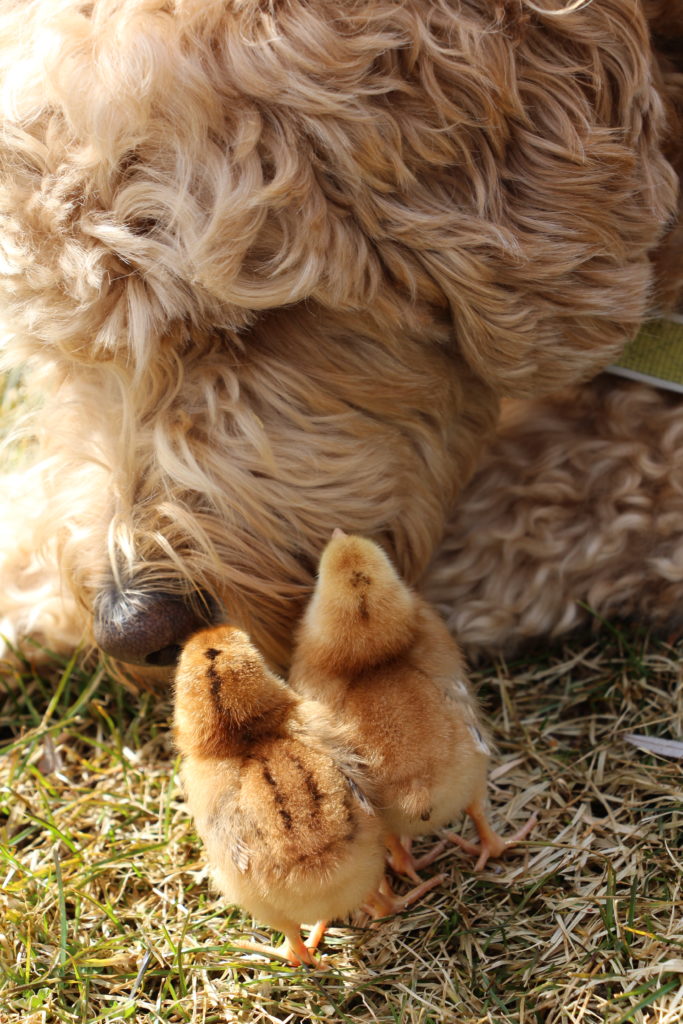
Barley (dog), Clove and Periwinkle. 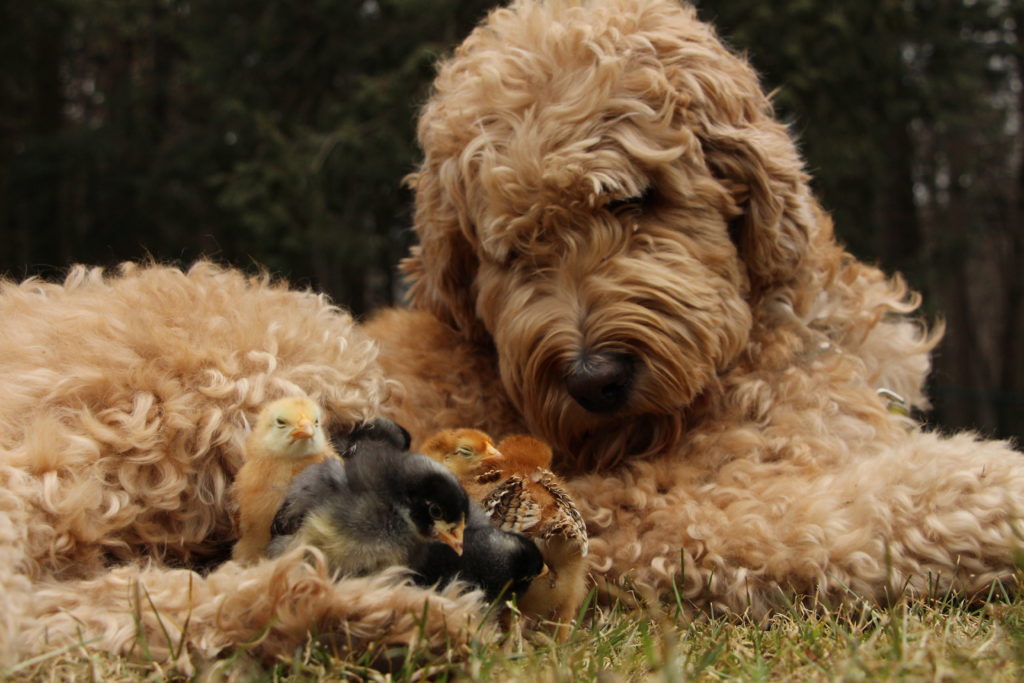
Taking a nap in the lap of a warm dog.
I’d walk him first to calm him down and sit him down on the lawn with his leash still on. Then, I’d let the chicks go towards him when they felt comfortable. They loved him. Or, more specifically, they loved his heat.
All was going well…until we realized Juniper was a boy! The draw back with rhode island reds and barred rocks is that there is not clear way to gender them as chicks. It was around 4 weeks that it became really obvious, Juniper, the barred rock was a cockerel (a male chicken under a year old). We found him a happy home elsewhere where he has lots of ladies to please and space to exert his big boy personality!
The tell tale signs was his large comb, overall dominance, yellow feet (barred rock females have dark feet) and lighter feathering. Once again, backyardchickens.com was where I went to find this out.
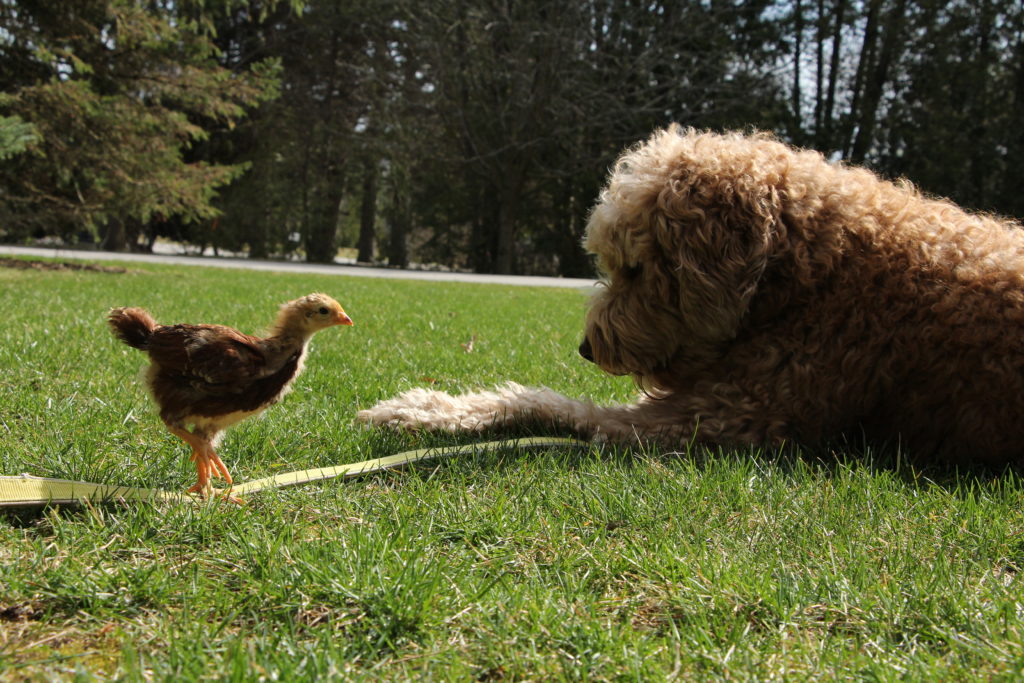
The girls didn’t seem to miss him though. In fact, their personalities got bigger! From month one to two, I was worried about Comfrey because she was quite a bit smaller than the rest and didn’t seem to be eating as much. Now at three month, she’s always the first one out the door to seek new places! Even though Parsley and Mallow are larger and the most dominant, they’ll follow Comfrey on all her wild adventures and Clove and Periwinkle (who now look and act very similar), have no choice but to follow.
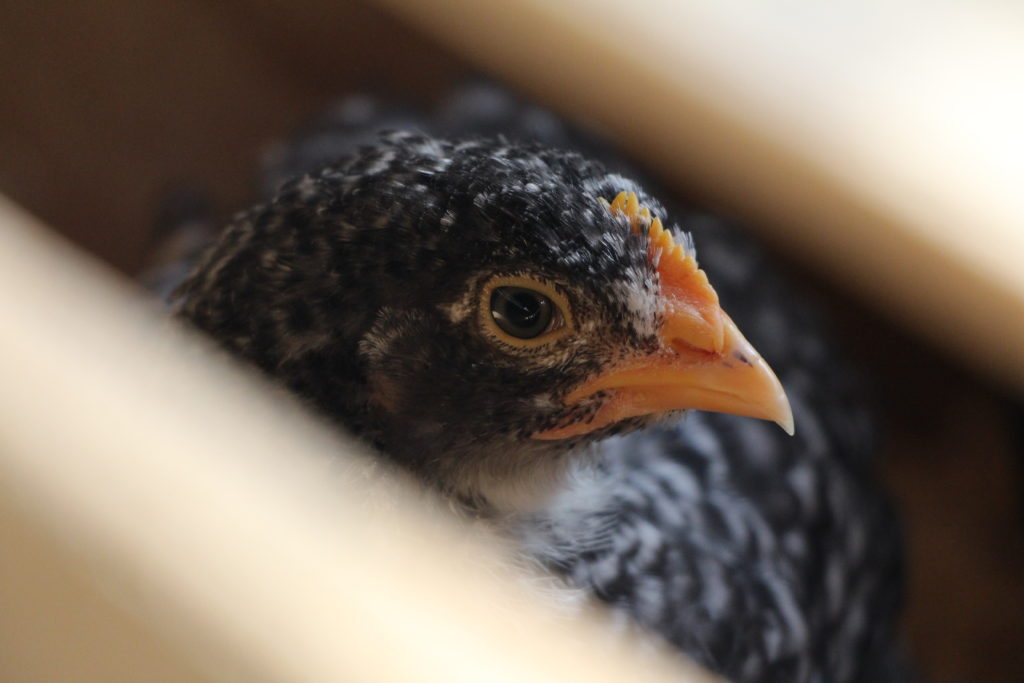
They are all learning how to perch on high up branches in trees but haven’t been able exceed 5 feet or so (thank goodness). It is quite the struggle to get them down.
Herding them around the yard to look for new patches is something that I do for fun now. You have to know your girls and their pecking order well to get them to move to your liking. For example, I know Periwinkle and Clove will always follow the rest of the flock, Mallow and Parsley will run off if there is another pullet with them and Comfrey will do whatever she pleases, then will magically summon the rest to follow her.
It is amazing how much your chicks will grow in a quarter of a year. One day they’ll be fuzzy fluff-balls of cuteness, the next, straggly teenagers and then beautiful young ladies! Below I’ve included some of my Chicken Whisperer tricks but if you want to learn how to raise your own chickens, check out the rest of my website!
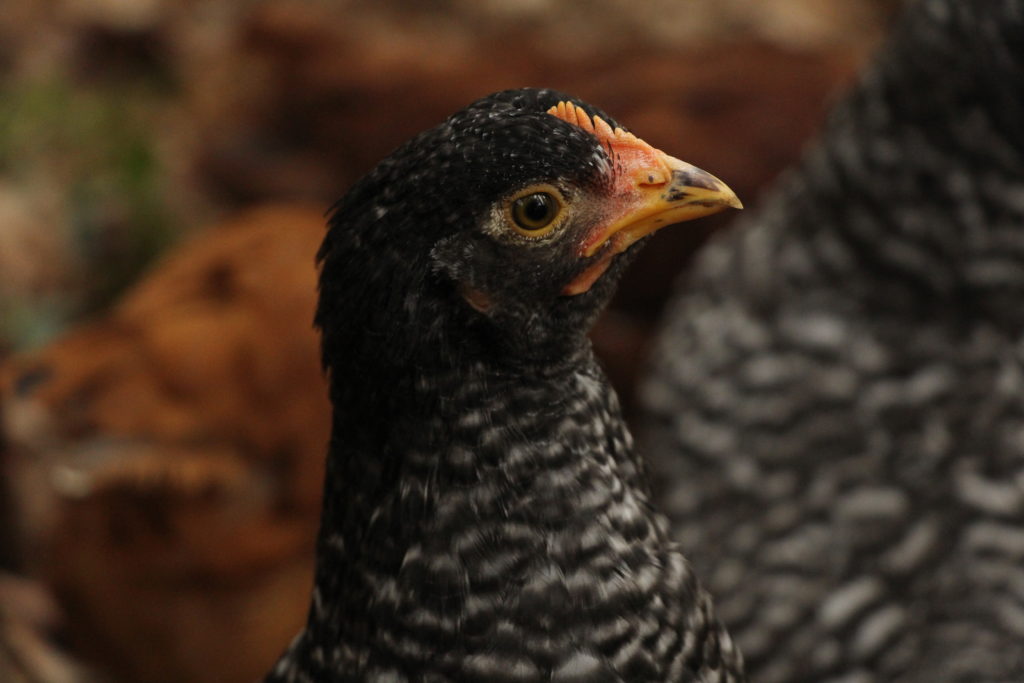
Chicken Whisperer Herding Tricks:
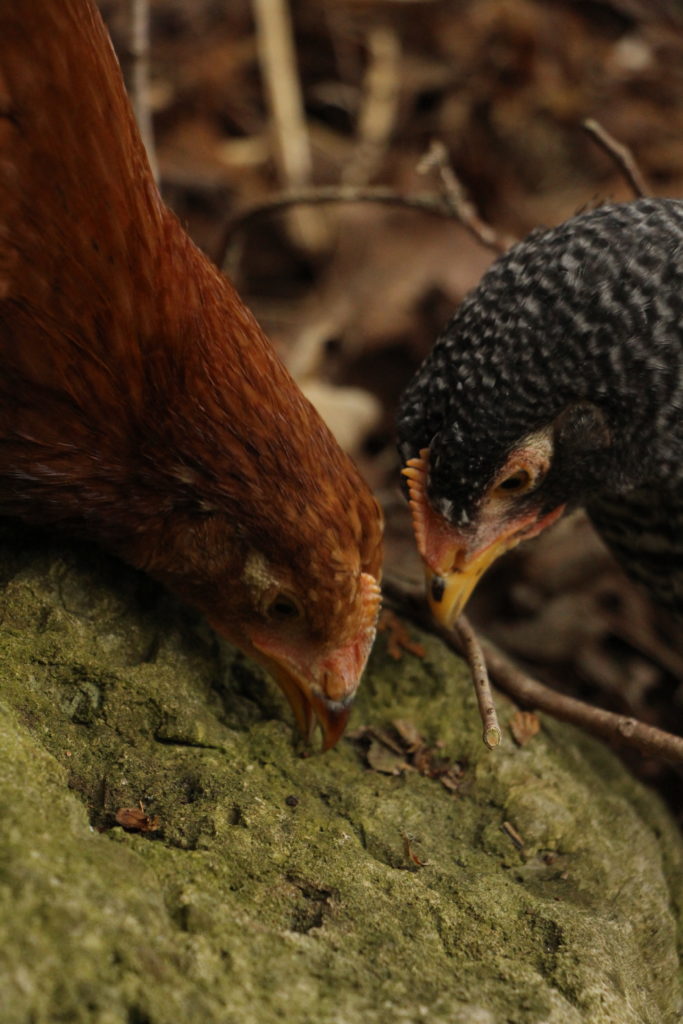
- Have a stick that is a good thickness and is slightly shorter than your shoulders (a bit longer than a hiking pole). This will help you block the one chick who tries to run off while using your body to keep the others on track. It is also handy when getting them out of bushes.
- Make a certain sound when using the herding stick; the chickens will know what you are trying to do and will react accordingly.
- Spot the leader and make sure she doesn’t get out of line! The rest will most definitely follow if you aren’t careful.
- Put their feeder in at the place you want them before you herd them. Once you are close enough to your destination, they will run towards it and you job is done!
Note: avoid making physical contact with the chickens and your stick. Simply waving the stick or thumping the ground with it should be enough to get them moving the other way.